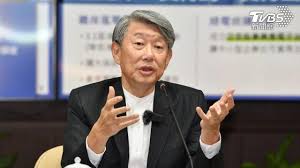by Francis Tuschek, Staff Writer
Taiwan is considering setting up renewable power plants in neighboring countries, such as the Philippines, and transporting the electricity back home to meet the green power needs of Taiwanese manufacturers, said yesterday. “The green power could be brought back via ships or submarine cables,” the Chinese-language Liberty Times (the Taipei Times’ sister newspaper) quoted Minister of Economic Affairs J.W. Kuo as saying on the sidelines of the annual Taipei Innovative Textile Application Show at the Taipei Nangang Exhibition Center.
As local governments and residents frequently differ in opinion about constructing new power plants, and it takes time to communicate and bridge the differences, the Ministry of Economic Affairs has to find a way to meet the nation’s industrial development and carbon reduction goals, as manufacturers needing green power cannot afford to wait, Kuo said.
Although discussions about this proposal are still in the initial stages, Kuo emphasized the significant advantages of establishing renewable energy plants abroad.
Firstly, it would help resolve the challenges of creating new power plants in Taiwan. Secondly, the green energy imported would be more cost-effective than that produced domestically, he noted.
As Taiwan moves to decommission its nuclear facilities and the government commits to reducing carbon emissions and achieving net-zero by 2050, the demand for green energy in the country is expected to increase, he mentioned.
Kuo pointed out that the concept of building plants overseas was inspired by Singapore’s plan to import electricity from Australia, located approximately 4,800 km away.
Thus, establishing a green power plant on Luzon, a Philippine island about 300 km from Taiwan, should not pose a problem, he asserted.
The Philippines offers three types of renewable energy sources: solar, wind, and geothermal, he added.
“We will seek a neighboring country with resources suitable for green energy development and encourage Taiwanese companies, not just the state-owned Taiwan Power Co, to set up these plants there before transmitting the energy back to Taiwan,” Kuo explained.
The minister also mentioned that Raymond Greene, Director of the American Institute in Taiwan, would assist in identifying appropriate locations for these overseas power plants, including in the Philippines and Japan.
Kuo first discussed the potential for renewable power plants in the Philippines during an event for the launch of the Indo-Pacific Strategic Thinktank in Taipei.
He noted that Taiwan aims to support the Luzon Economic Corridor initiative, which was launched by the US, Japan, and the Philippines earlier this year to promote regional development.
Nonetheless, experts have indicated that constructing an undersea cable between Taiwan and the Philippines could face several challenges, including time, cost, and the risk of the Philippines defaulting on payments.
台灣考慮在鄰近國家如菲律賓設立可再生能源電廠,並將電力運回國內,以滿足台灣製造商對綠色電力的需求。經濟部長郭智輝昨日表示。
「綠色電力可以通過船舶或海底電纜運回來,」郭智輝在台北南港展覽中心舉行的年度台北創新紡織應用展上表示。
由於地方政府與居民在建設新電廠方面的意見經常不一致,且需要時間進行溝通以彌合差異,經濟部必須尋找方法以滿足國家的產業發展與減碳目標,因為需要綠色電力的製造商無法再等待,郭部長說。
儘管這項提案的討論仍在初步階段,郭智輝強調在海外設立可再生能源電廠的重大優勢。
首先,這將有助於解決在台灣建立新電廠的挑戰。其次,他指出,進口的綠色能源將比國內生產的更具成本效益。
隨著台灣逐步退役核設施,政府致力於減少碳排放並在2050年前實現淨零排放,國內對綠色能源的需求預計將增加,他提到。
郭智輝指出,建設海外電廠的概念受到新加坡計劃從距離約4800公里的澳大利亞進口電力的啟發。
因此,他斷言,在距離台灣約300公里的菲律賓呂宋島上建立綠色電廠應該不成問題。
菲律賓提供三種可再生能源來源:太陽能、風能和地熱,他補充說。
「我們將尋找適合綠色能源開發的鄰近國家,並鼓勵台灣企業,不僅僅是國營的台灣電力公司,前往那裡設立這些電廠,然後將能源傳回台灣,」郭部長解釋。
該部長還提到,美國在台協會主任雷蒙德·格林(Raymond Greene)將協助尋找這些海外電廠的合適地點,包括菲律賓和日本。
郭智輝在台北的印太戰略智庫啟動活動中首次討論了在菲律賓建立可再生能源電廠的潛力。
他提到,台灣旨在支持由美國、日本和菲律賓於今年早些時候啟動的呂宋經濟走廊倡議,以促進區域發展。
儘管如此,專家指出,台灣與菲律賓之間建設海底電纜可能面臨多重挑戰,包括時間、成本及菲律賓可能違約的風險。


